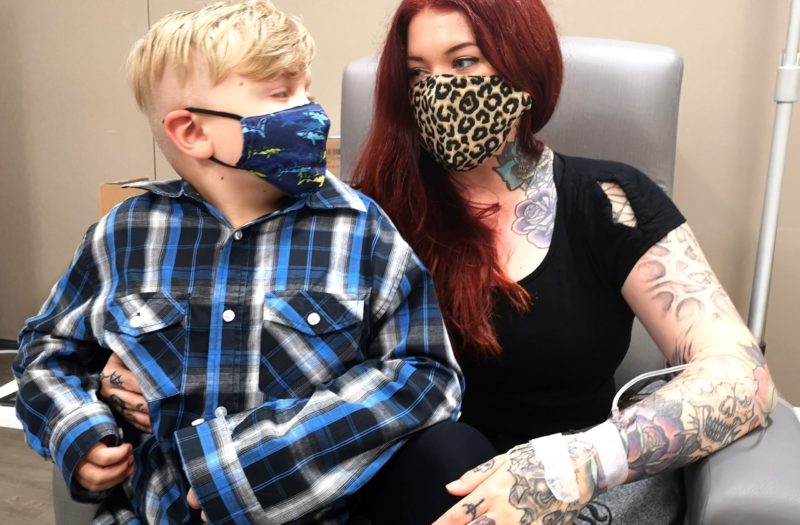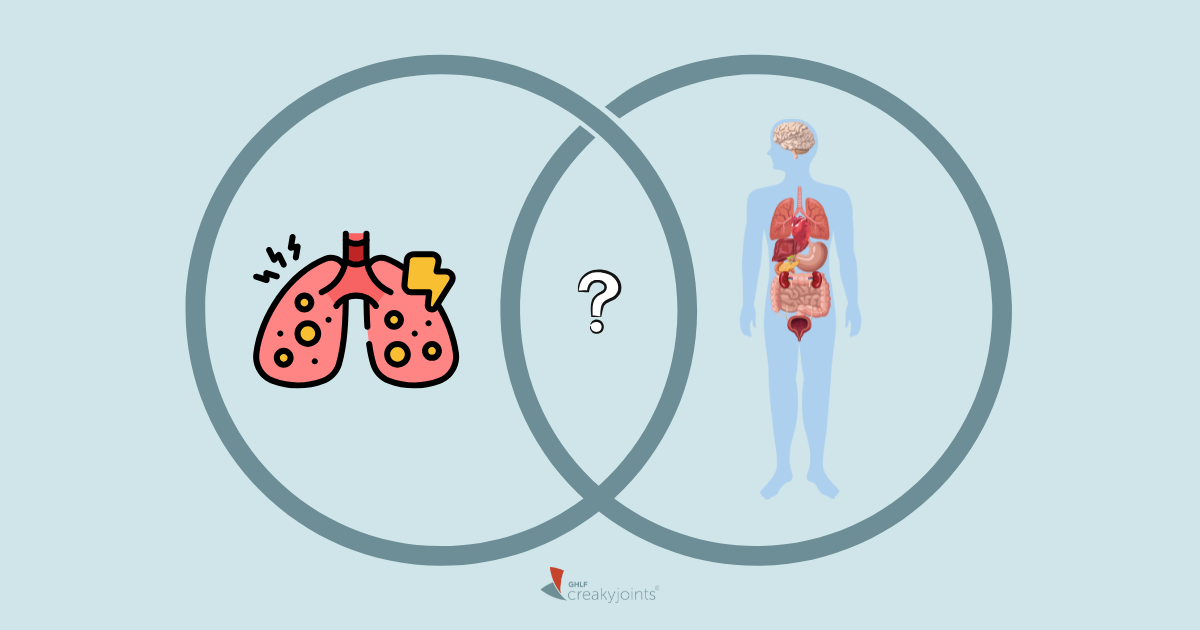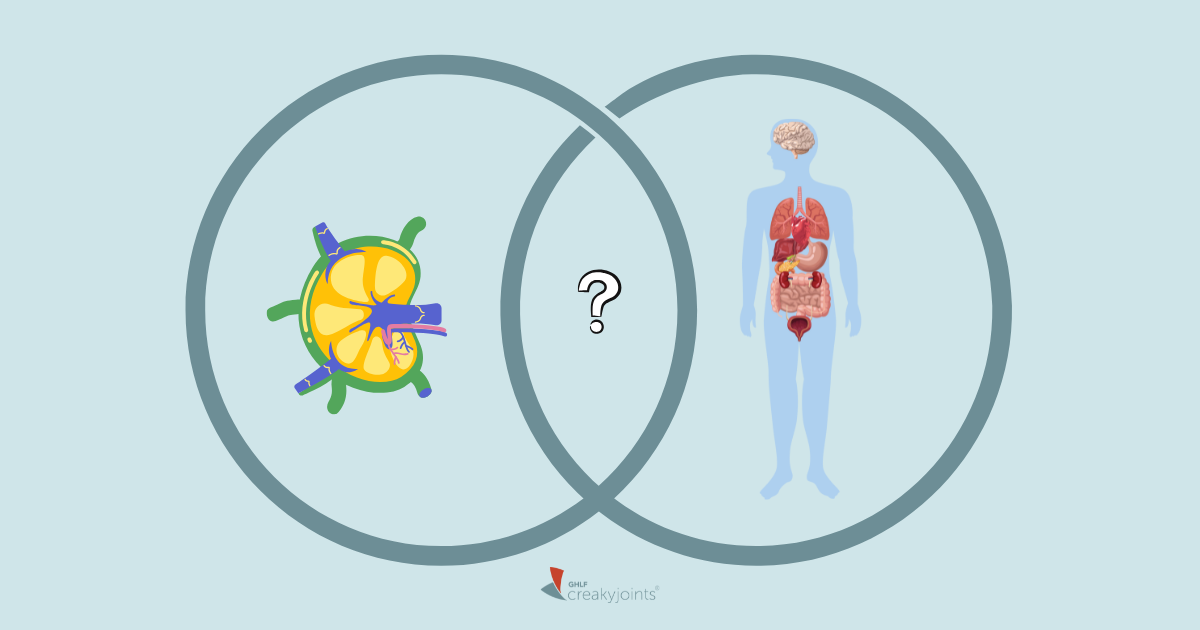Learn more about our FREE COVID-19 Patient Support Program for chronic illness patients and their loved ones.
During the middle of flu season in 2019, around Christmas, I asked my son’s second grade teacher if she would let me pick him up outside the building after another child coughed in my face as I was waiting in the school’s tiny cramped hallways. I fell sick for a while after that.
Remember, this was weeks before words like COVID-19, coronavirus, SARS-CoV-2, social distancing, and cloth face coverings became commonplace in our daily conversations and decision-making.
Elementary schools have always been a petri dish of germs. And as someone with rheumatoid arthritis (RA) and other underlying health issues, this fact has always worried me, especially since I am a single mom to school-aged child. I can’t afford to get sick. And I certainly can’t afford to get COVID-19.
Making ‘The Choice’
That cold took me out for well over a month. Any type of infection when you have RA isn’t good news. Common colds and other germs may be harder for us to fight off because of our diseases and the medications we take for them.
For the five years I’ve been living with a rheumatoid arthritis diagnosis, I’ve always felt anxious throughout cold and flu season. I know how important it is for me to stay healthy, but with my son in school, there’s a lot about my exposure and susceptibility I can’t control.
And that’s why deciding not to send my 7-year-old back to school when it reopens in mid-September was — honestly — not that hard of a choice for me. However, that doesn’t mean it wasn’t a painful one all the same.
Jacob, my 7-year-old son, hasn’t stepped foot into his school since the end of February 2020 and he most likely won’t be back for who knows how long. I’m not planning to send him until a COVID vaccine is available or we get our case numbers down to zero (or close to it) consistently.
My Courage to Keep Him Home
I’ve had to make my share of tough and courageous decisions and adaptations in my 34 years on this planet. I didn’t find out I was pregnant until well into my second trimester. It took me and my doctors almost two years figure out that rheumatoid arthritis was what was causing the chronic pain and fatigue that got progressively worse after I had my baby. Then after my partner and I broke up, I had to adjust to life a single mom with chronic illness. I’ve been through more medication changes than I can keep track of.
But eventually things started to fall into place, more or less. I found a good treatment regimen for my RA that allows me to have the energy and functionality to raise my son. (Don’t get me wrong — I still have plenty of flares and bad days and weeks.) I lost more than 60 pounds because of my gym routine, healthy eating, and other lifestyle changes. I became an RA patient advocate, researcher, and writer.
But just as things started to have some semblance of normalcy and predictability in my life — boom. Hello, coronavirus pandemic.
Needless to say, I was not expecting to have my life turned around yet again in 2020, but at least this time I knew more about what it takes to adapt to a lifechanging circumstance.
And while I’m far from alone in being affected by the coronavirus pandemic, I — and others living with underlying health conditions — have had to confront the pandemic in more restrictive, uncomfortable, and painful ways.
Answering the Tough Questions
One of those painful decisions is becoming a home-school mom for as long as it takes. I need to keep my bubble small. I have the ability to do so because I am on disability due to my RA. I don’t have to work all day long.
As every case of arthritis is different, every parent is different and every child is different. I was never really good at school as a kid. I can see that has also been passed along to my 7-year-old son as I try to get him (ok, and myself too) somewhat enthusiastic about anything related to online school.
I know it’s not going to be easy, but I dunno, I feel like it’s got to be better than being on a ventilator or having life-threatening heart or lung damage from COVID. My rheumatologist, a healthy woman in her forties, was diagnosed with COVID-19 in late April and has been on sick leave ever since. If it can affect someone like her so badly, how might it affect her immunocompromised patients like me?
I’ve had to ask myself some questions lately and had to observe others to make my decisions.
- As much as I want those six hours a day to myself again, is it really the safest option for me, my son, or his grandparents who are also at a higher risk for COVID complications?
- Do I feel confident in the school system to keep this under control?
- Do I feel confident that other families will teach their children about social distancing and keeping others safe, especially those with compromised immune systems but who don’t look sick or elderly?
- What does my son want? What makes him feel safe?
My son knows all about social distancing and would never imagine leaving the house without wearing a mask. But he’s 7 — not perfect. There are times when I can’t get him to remember to flush the toilet after he goes to the bathroom. He’s still young, which makes proper hygiene and listening challenging at times.
I didn’t have to overly debate this or hem and haw too much. I knew right away in my gut that I am not feeling confident enough to send my son into the third grade in person, even though we conveniently live beside the school. I see too many people in our community not taking social distancing, the virus, or the health of others seriously enough.
Things Aren’t ‘Fine’
I’m used to people telling me “You’ll be fine. You shouldn’t worry. You’re young” when I bring up any concerns with my RA. Now these brush-offs are even worse, as some people pass off the severity of the pandemic and my concerns as someone with underlying health issues.
This actually happened to me recently. When I ran into the parent of a child at my son’s school on the street, he brushed off my request for him to stay socially distanced since he just came from the airport. Then, he thought it would be funny to lick his finger and touch my shoulder, then invite me over for a drink and play date with the kids. Ummm, what? That’s not my brand of humor — pandemic or not.
Unsurprisingly, we’ve had a rise in coronavirus numbers as people are breaking social distancing guidelines for summer parties, leading us into what could be a devastating second wave.
I know I’m not the only one making painful decisions because of the pandemic. My father, who lives in Thailand and who we have not seen in more than two years, was supposed to visit us this summer, but we recently decided against it. I don’t have the words to describe how much I miss him, but I understand that the small island he’s retired on has almost no cases compared to what’s happening here. Him staying home, safe, was a no-brainer.
Balancing Fear and Hope
Now I am left hoping the school system won’t leave behind those of us who choose to not attend in person.
I’d be lying if I didn’t acknowledge my fears and pains.
I’m pained because I want a “normal” life for my son and I’m afraid it may never happen for him. I’m pained because I feel guilty that, once again, my health issues are holding him back from that so-called normal life. And sometimes I’m literally pained because all the stress in the world and my personal life is affecting my rheumatoid arthritis and mental health.
But living only in fear hasn’t gotten me this far. If my RA has taught me anything, it’s that me must move forward and learn to adapt. Even though it’s painful, I know this is the right choice for me and for Jacob.
And now we must forge on, and, as always, adapt.
Get Free Coronavirus Support for Chronic Illness Patients
Join the Global Healthy Living Foundation’s free COVID-19 Support Program for chronic illness patients and their families. We will be providing updated information, community support, and other resources tailored specifically to your health and safety. Join now.






